“The Quest for the Holy Barolo” - Part 2
- John Zuchero
- Oct 26
- 11 min read
PSA: to all of the readers who think John writes this blog solo, you must know that John writes the first draft and then Nancy edits and embellishes it. And by embellish, we mean, adds the personal flavor to John’s, “just the facts, ma’am” approach, as in Joe Friday in “Dragnet.” So don’t just praise (or pan) John, Nancy is responsible too. Enough said. 😊
Monday was an open day—no wineries scheduled. So, we did laundry, went grocery shopping, and just chilled. We both already had so much rich food we decided to get something different. When we asked each other what we wanted one word came out—hoagies. Hoagies, also known as subs, grinders, Italian sandwiches, and even Po’ Boys, are a staple of Philadelphia where we are originally from. And, since we were in an Italian supermarket, we bought prochutto, salami, provolone, and two small baguettes. We already had lettuce, tomatoes, and olive oil back at the house, we were all set. Back home we built ourselves “one big beautiful” hoagie.

Check out this guy to see how to build a hoagie. Listen to the last few minutes of the video where he and his buddy sound like they’re evaluating a fine wine.
If you were around for our last post, you’ll know that we took an all day wine tour with a fellow named Alessio. On our way from one winery to another, we passed a large building with the words “Terre del Barolo” or Land of Barolo. Alessio put up his nose at it as we passed and we didn’t give it a second thought.
Tuesday John planned to go to a grower named Arnaldo Rivera, because he had read that they had Barolo wine from all the different areas of Piedmont. As we followed our GPS, we ended up at the same building, Terre del Barolo that Alessio had ‘poo-pooed’ the other day.
We were met by a 30-ish woman named Helena, who gave us and a Canadian couple an ‘animated’ three hour tour, history lesson, and wine tasting. It turns out that Arnaldo Rivera was a visionary. In 1958, he started a wine cooperative. In the beginning, he had 21 different growers contributing grapes that were then made into wines in a single cellar. Today there are over 300 people/families who each contribute grapes from their vineyards.

Pictures of the growers. The oldest wines. More growers.
Some vineyards are only a couple of acres. Some of the grapes are made into the most prestigious Barolos, while other are made into wine for day-to-day. Helena took us to see the barrel room, which was the biggest barrel room John had ever seen.

We also learned that over the years, the Piedmont area has lost 70% of its forests (where you find truffles) to wine cultivation because there is so much more money in wine, especially Barolo.
After the history lesson and tour, we came back upstairs to the tasting room. While waiting for it to start, John saw an older Italian man dressed in everyday clothes walk in the front door, check out the large selection and pick up a single bottle of wine, paid and left. That really brought home the fact that these wines are priced at every level from everyday wines to high end Barolos.
Three liter cartons. The entire selection. The three liter cartons up close.
Our tasting was supposed to be with three wines but because all four of us were so enthusiastic, Helena let us taste five of their wines. We started with a white called Nascetta, which John asked her about. When he pronounced it “Na Chet A” Hellina immediately corrected him; “No,” she said emphatically, “It’s “No Chetta.” It reminded him of the first time he pronounced Willamette (the river on which we live in Oregon and the Pinot Noir wine region) as “Will a met” and was corrected by his brother, David the winemaker, as “Will am it.” He appreciated the lesson when he got to Oregon and learned his little brother was correct. Here’s a quick rundown of the five wines we tasted.

Below is a picture of many of the wines the co-op produces. We want to point out something interesting about the labels. Notice the colorful watercolors on each label. The illustrations on each label are not random decoration—they are artistic depictions tied to the vineyard site (cru) of origin.

After three hours, we headed out to find a place for lunch and then on to our next Airbnb. We stopped at a little osteria truly in the middle of nowhere and had an amazing lunch: Nancy ordered the appetizer special, which was a tapas of Italian things from a quiche to carpaccio (actually about six things and a cup of pumpkin soup). John had cheese and spinach ravioli in a butter and sage sauce. Plus a carafe of wine (a Barbera) and a Barolo Chinato (after-lunch drink) for Nancy and an espresso for John (he was driving).
When the owner brought the Barolo Chinato to the table, she just left it there—so very Italian—drink as much as you want.
During lunch John mentioned that we had an open day the next day and maybe he could find another winery to visit. Nancy's immediate reaction was “No way, give me a break!” She said that this was my quest, but let’s do something different tomorrow. Nancy’s been a good sport, so John said “ok”.
BTW, next Tuesday, after we leave the Barolo region, Nancy has us going to Biella, the cashmere capital of Italy—more shopping, Ugh! (As a Nancy aside, ask John about the expensive cashmere sweater he purchased just before we left, which he has worn everyday in chilly Piedmont. Now I want one and there is an outlet store in Biella.)
As we prepared to leave the restaurant we received the bill for all that food and drink—it came to €25. You can’t beat that!
And as we left, the same group of eight men were still sitting on the porch smoking and drinking coffee as when we arrived, "discussing the state of the world.” Such is life in the Italian countryside!
We finally made it to our fourth rental, which we call the “Yellow House”. Remember last time we mentioned the “beautiful house” where we were staying that wasn’t that beautiful? Well, the Yellow House is out of this world. The house, which appears to be completely renovated and overlooks multiple vineyards, is owned by a Swiss gentleman named Roland, who is a super host. We’re here for six nights before heading to Lake Maggiore in the north.
Below is a walk-around video of the Yellow House.
Looking down on one vineyard. The house itself. Men planting vines next door.
The Yellow House has almost anything you could want including things you did not even know existed. Have you ever seen inflatable hangers? They prevent “shoulder marks” when hanging clothes!
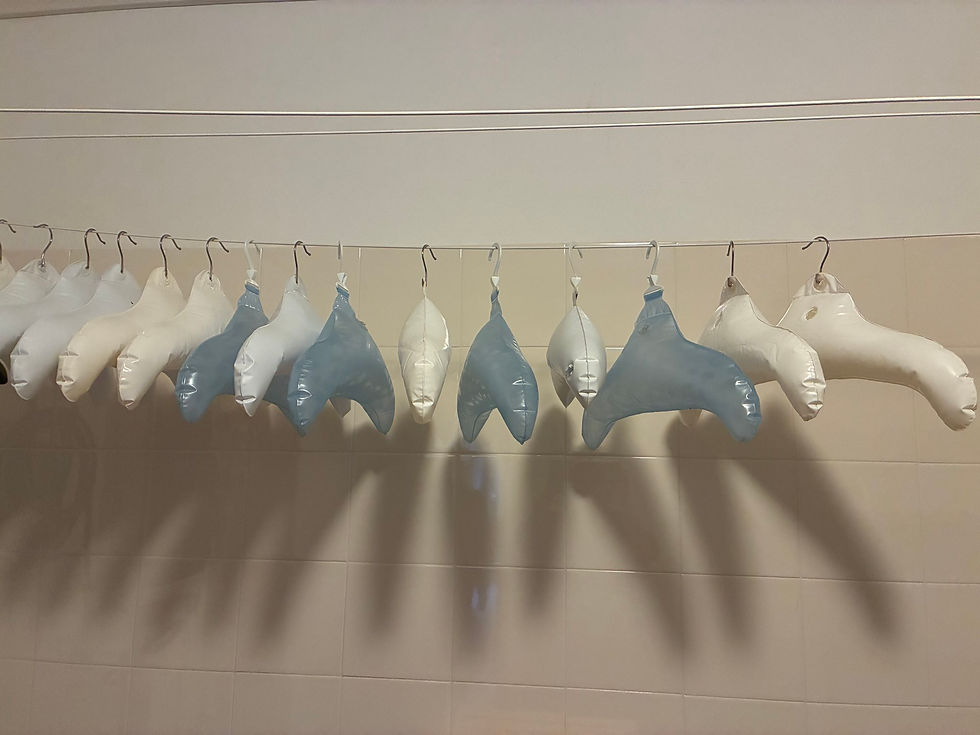
As we have mentioned , the food in this part of Italy has been very rich. Interestingly, Piedmont is home of the “Slow Foods” movement, which began in 1989 by Carlo Pettini when the first McDonald’s in Italy was set to open near the Spanish Steps in Rome. Petrine organized a protest and rallied advocates with bowls of penne pasta instead of placards and signs. The group handed pasta out to the passerby shouting slogans against fast food. Today, the Slow Food organization is devoted to preserving local Italian food culture and tradition and has spread around the world.

The foods here are not only rich but calorie intense: lots of pasta of all different shapes and sizes like agnolotti (filled with cheeses and spinach), Gorgonzola sauces, diced raw meat, goose liver pate, poached egg with cheese fondue, and Piedmontese veal fillets with goose foie gras and sauce Vecchio Samperi to name a few. Whew! We are not getting on a scale for weeks and weeks after we get back
Piedmont pasta, raw beef, and duck.
But today, we decided we needed another simple fare; we wanted pizza! Surprisingly, pizza is often only served at the evening meal in this area of Italy. So, we needed to find a simple bar/pizzeria. Not so easy but John happened to see a place in a small town on the way back and forth from the grocery store with a big neon PIZZERIA sign outside. The place, called Pizza nell Arte, was fun and had really good pizza. The place was decorated with artwork done by the owner’s father.
We had two pizzas, one red and one white and some Barbaresco wine…no Barolo today. This little hole in the wall even had a sommelier, who worked in the adjoining restaurant called Carlo’s Grill BBQ! BBQ in Piedmont, who knew? (If Chris Fatzinger is reading this, “sorry Chris, they beat you to it!”)
Their logo, the staff with the owner in the center, and getting ready for Halloween .
When we were about to leave the owner asked us where we were staying. When we told her, she gave us her card and said that they would deliver there. We can’t get food delivery where we live in Portland, but we can in the hills of Piedmont.
Thursday we went on a walking food and wine tour of Alba. We started out on an overcast day with the chance of high winds and rain. As we write this later, the same day, we’re outside the yellow house (in the middle of four separate vineyards) in the bright sunshine. In Portland we say, “Don’t like the weather? Wait five minutes.” Seems the same. This morning it was overcast, later in the morning it drizzled but the sun was out and now beautiful. The high winds forecasted for 10am finally arrived at 10pm.
We met our guide,Fay, on Garibaldi Square in Alba. Fay’s real name is Fanny but she has heard too many comments about her derrière. The three of us went first to a cheese shop, where we tasted four types of cheeses from a mild one to an older aged one.
Our four cheeses. Our guide, Fanny. A typical Piedmontese cheese.
Next was a truffle shop, Tartufi Ponzio. We tasted white and black truffles in cheese, in salami, in other meats and as spreads, butters and jams along with some red wine. Everything in the store had truffles as an ingredient. There was even Truffle Vodka at 130 euros. The store had been started 35 years ago and is still owned by the same family—who still hunt truffles on their land.
The grandad, owner. Truffle vodka, truffle olive oil.
As we learned, truffle oil is nothing more than olive oil with a chemical aroma of truffle—no real truffle involved. It’s like ordering and extra dry martini, and telling the bartender to just “whisper” the word Vermouth into the glass.
Our third stop was a trattoria where John sampled sliced veal with tuna (a very typical Piedmontese dish) and Nancy sampled crusty bread with anchovies and a small cup of bagnet verd, a sauce made from parsley, stale bread and vinegar—and a glass of white wine.
Fay then took us to another trattoria where we had northern Italian raviolis, which are smaller than the common southern variety and some local Nebbiolo wine. Fay explained that these ravioli are much more French in style than the southern variety. In fact, much of Piedmont is influenced by France, which is so close. We ended our tour by having a cup of espresso and some sweets at Barmardi Pasticceria Bar Cioccolateria.
It was a really good tour since Fay included lots of history about the food and the area. We stopped at sites showing how Alba was actually built on top of ruins from an Ancient Rome city.
Friday, October 24th was the most beautiful morning we have had in Piedmont. Everywhere we’ve stayed the descriptions said we would see the Alps off in the distance—no such luck until this morning.

As we left for another winery, the sun was shining, the temperature was brisk and the Alps were radiant off in the distance. We had to drive 50 minutes to reach the vineyard called Teresa Soria.
When we arrived we were met by Emanuel, the third generation winemaker of this vineyard. This winery specializes in the white grape Moscato. Moscato refers to a family of ancient, aromatic grapes that are used to produce a wide range of wines, from dry to sweet, sparkling to fortified. In the USA, muscatel is often known as a sweet fortified wine, often associated in the past as the drink of the downtrodden. But not the wine that we tasted today. The white was light, sparkling and dry.
Emanuel actually walked with us through his vineyards, while talking about soil, color and weather. Though harvesting was in August, he managed to find grapes for us to sample.
The path to the vineyard. Emanuel with a Muscato grape. And, from left to right: a 12 year old vine, two 40-50 year old vines, and finally a 75 year old vine.
We had just started our tasting when another group arrived for the same tour. We were in no hurry, so his mom, the real Teresa Soria, set us up on the deck and we just enjoyed the warmth until he could do the tasting for all of us together. Typical Italian mother, Teresa, who speaks only Italian, kept checking on us. Thank heavens for google translate. In fact, that is how she communicates with Emmanuel’s nine year old son who is learning English in school. They are both learning a language at the same time.
While waiting, we learned that the winery was begun by Emanuel’s grandmother when his grandfather was off at the war. She was a pioneer doing work generally only done by men.
Grandmom and mom both used something called the Dutch Filtration method to remove impurities in the wine. The bags in the pictures below are what’s used in Dutch Filtration. And, Emanuel and Teresa.
Emanuels’s mother and father continued the family tradition until Emanuel took over and modernized the operation. Today the family makes a number of wines from a wonderful sparkling Asti Spumante to a dark red Barbera. It was so good, we bought seven mixed bottles both red and white.
Emanuel’s dad and mom. Our cheese and salami. Two folks you may know.
Emanuel allowed us to taste the newest Muscato directly from the barrel.
John has memories of drinking wine directly from the barrel. Before his brother made wine, his grandfather and father did the same. Here’s a picture of John’s brother and sister-in-law, Denise, back in the seventies checking out Dad’s wine.

Of course, Teresa Soria was Nancy’s favorite winery so far since she is more interested in the “story” than the wine itself. Emanuel’s nine year old picked the cork design, he like superhero’s so he picked Superman, Wonder-woman, and as you can see, Batman.

When we left we went to a small village cafe for a light lunch after the cheese, salami and wonderful breadsticks that we had during the tasting. Our waiter was a young man who seemed to be a stereotypical “Italian” male of old. Slightly arrogant and seemingly rude, he seemed to not be interested in anything but the family luncheon that was set up nearby.
Our “host”, probably an apt option, and maybe Lou Costello chowing down some pasta.
We ate, paid and left and traveled the 50 minutes back to our rental.
Tomorrow begins the last three days of our time in the Barolo region. John has four wineries scheduled in the next three days that ChatGPT told him had Barolos that matched his criteria. We’ll see if any actually meet those.
See you next time for the last installment of “The Search for the Holy Barolo”.
Ciao,
Nancy and John



































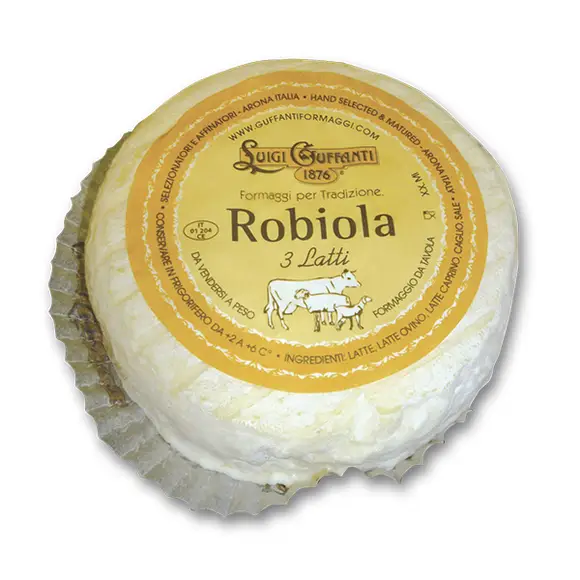




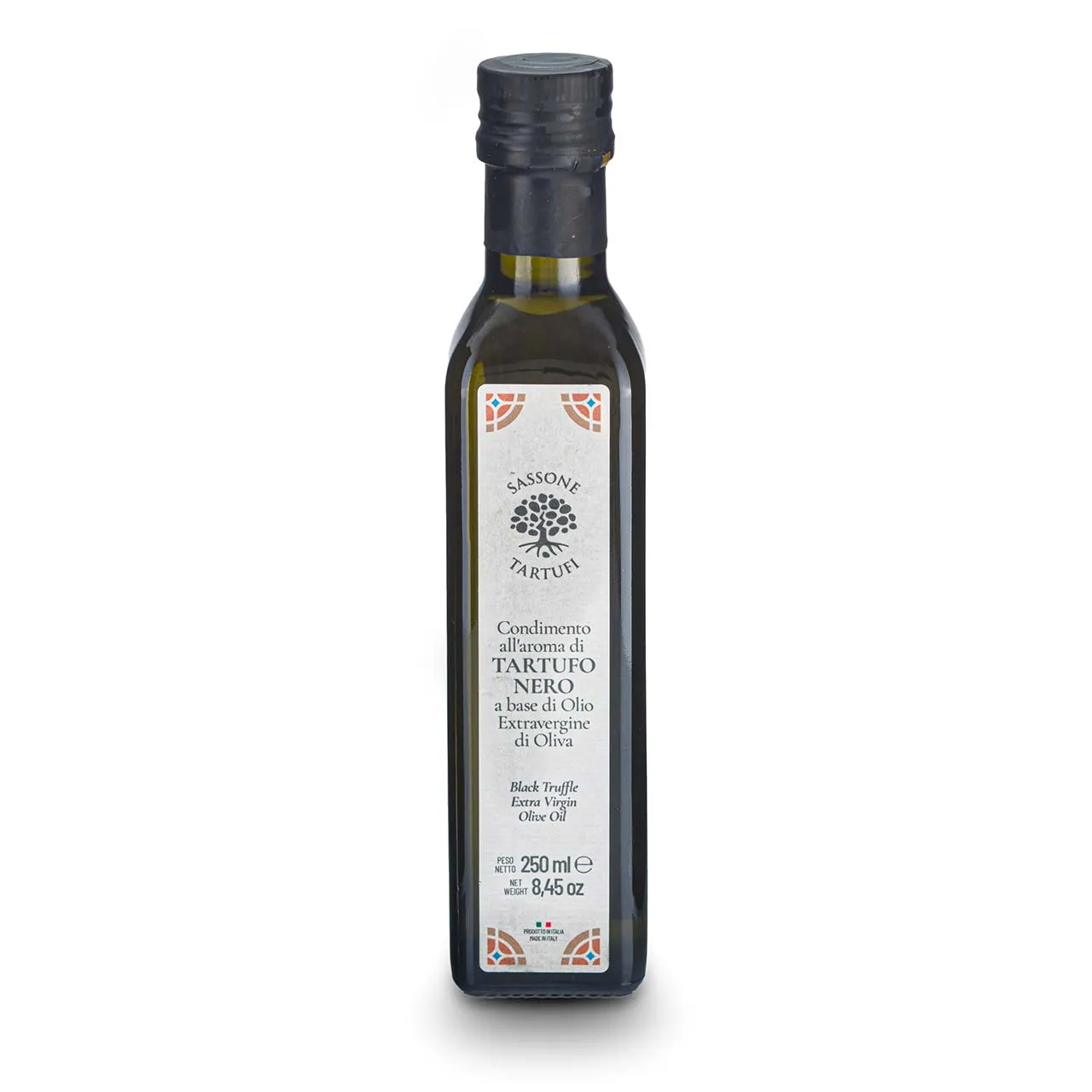









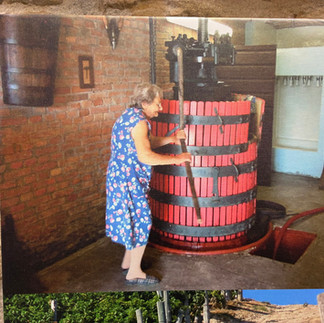

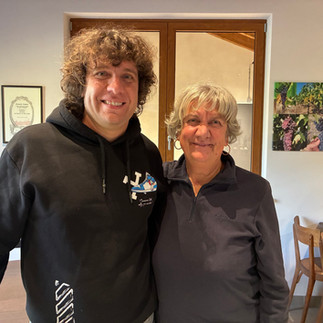





















Comments